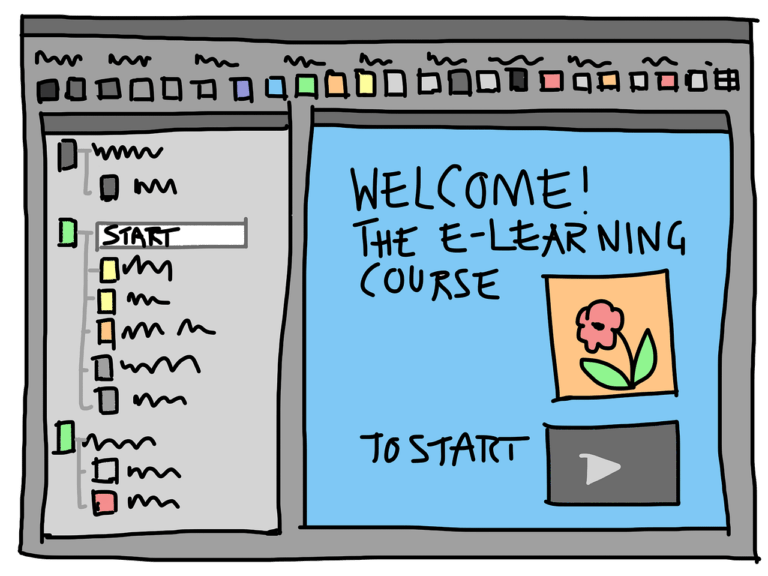Employee Training LMS: 7 Contemporary Mobile-Friendly Exercises To Include

Mobile learning options provide the L&D flexibility that your staff enjoys so much. What activities can you thus include that is designed exclusively for mobile devices? We will dive into employee training LMS and what it entails with being mobile-friendly.
Read: How To Make The Most Of Your Employee Training Software
Do You Wish To Improve The Modern And Mobile-Friendly Of Your Employee Training LMS?
Many businesses consider mobile to be an afterthought. But those that are knowledgeable are promoting mobile-first, and they are beginning to gain ground. It is no longer about using responsive and adaptive design strategies to create websites and then making adjustments for mobile.
This order needs to be changed if you want your portable training to be effective. To do this, tools, features, and components must be developed with mobile in mind. They can later be modified for desktop or the web. What are some of these employee training mobile-friendly components, then?
7 Employee Training LMS Improvements
Bite-size Serious Games
On our mobile devices, we all have games. They aid in passing the time by keeping us busy and moderately amused. They subject us to advertisements and consume bandwidth, according to the vendor. Thus, they serve as a marketing channel. Even though they have a real objective, serious games can appear and sound like typical phone games.
They serve purposes beyond simple pleasure. They want to impart a lesson (to businesses). To hasten the procedure, choose a rapid authoring solution with integrated gaming templates. They’ll offer your game the proper mobile screen functionality, look, and feel.
Finger-Friendly Mobile Modules
Training modules can be used in the office with keyboards and mice to navigate. Some programs simply modify the screen size when you adapt this for mobile use, which is not the best solution. Reduce the amount of content displayed on the screen (even if it means increasing the number of slides or pages).
Changing navigational aids is also beneficial. Go for tabs and clickable icons instead of arrows and scroll bars. Rich text and zoomable optics should also take the place of pop-ups and lightboxes. A 5- or 6-inch smartphone screen makes these much simpler to operate.
GPS Overlaid Training Exercises
You can essentially make your training games come to life with smartphones and tablets. Designing worker training games that are grounded in reality is the key. You could ask them to gather office supplies or hone particular job-related abilities.
Finding the most efficient route to work, for instance, could help them improve their observation skills and memory. This is true whether they are riding a bicycle, walking, driving, or utilizing public transportation. This is another original method for instilling punctuality and time management. (Avoid looking down at your phone when you’re riding or driving, though; it could lead to accidents.)
The game may be played while running errands for the workplace or getting lunch, allowing you to multitask and train at the same time.
Reposition Your JIT Library
Although it may need a lot of work, it will be worthwhile. You can create one from scratch with mobile in mind if you don’t already have a short resource collection. On the other hand, if the appendices are already there, create a checklist and follow it.
The resolution should be raised while the size should be reduced for graphics. By doing this, you can still zoom in on the details while using fewer data and storage on your phone. Video, audio, and image files should all be compressed.
Include navigational aids for simple playback (pause, play, rewind, slow-motion, closed captions, mute, text-to-speech). Each reference material should be revised so that it may be understood in no more than a minute. Fewer words and more images.
Make sure it’s the appropriate imagery, though—the kind that can be understood without the use of liner notes or written explanations.
Quick Recap Infographics
Because they are focused and visually appealing, infographics are a fantastic complement to your employee training LMS. Employees examine the infographic to review corporate policies, learn about product benefits, or review task procedures.
To view specific areas of graphs and charts, they can zoom in. You can also access more assistance tools by clicking on the embedded links. Avoid links that aren’t suitable for tapping once more. Additionally, use larger fonts and less text so that they can view the infographic in its entirety on their little screens.
Task Simulation
It’s not necessary to use immersive goggles and haptic gloves for virtual reality training. It might be a straightforward simulation, but it captures your attention with the perfect soundtrack and compelling plot. However, you should keep the intricacy low because you’re training on a mobile device.
Keep your simulations focused instead of designing expansive cascading landscapes because your screen area is limited.
You could create a scavenger hunt for desktop versions that replicates your complete office complex. For mobile, keep their “prize” hidden in a single space or limit your setup to a single desk. Create a number of small-scale simulations that are each focused on a single objective as opposed to a complex, large-scale gamer escape.
The topics of fire, flood, terrorism, and data security can all be covered in a desktop safety simulation. Each one should have its own autonomous mini-module in a serious mobile simulation.
Video Demos
Employees can view a video demonstration of a task or product feature whenever and wherever they like. Even tips on how to handle difficult clients or hone their sales pitch may be found in the clip. There are almost unlimited choices.
Employee training videos that are optimized for mobile devices must be brief and compressed. For users who view the content in public areas and for employees with special requirements, subtitles should also be provided.
Conclusion
Certain configurable tasks are necessary for your employee training LMS to go mobile. You need the appropriate writing tools for our LMS to be mobile-optimized. But how precisely should these portable characteristics be used? Develop brief simulations and serious games with objectives.
Include GPS modules from the real world on top of your practice activities. Make sure your JIT resources and navigation choices are all accessible on mobile devices. Don’t merely reduce the screen size. Set up your tools, features, and training materials with mobile-first, and desktop later in mind.






